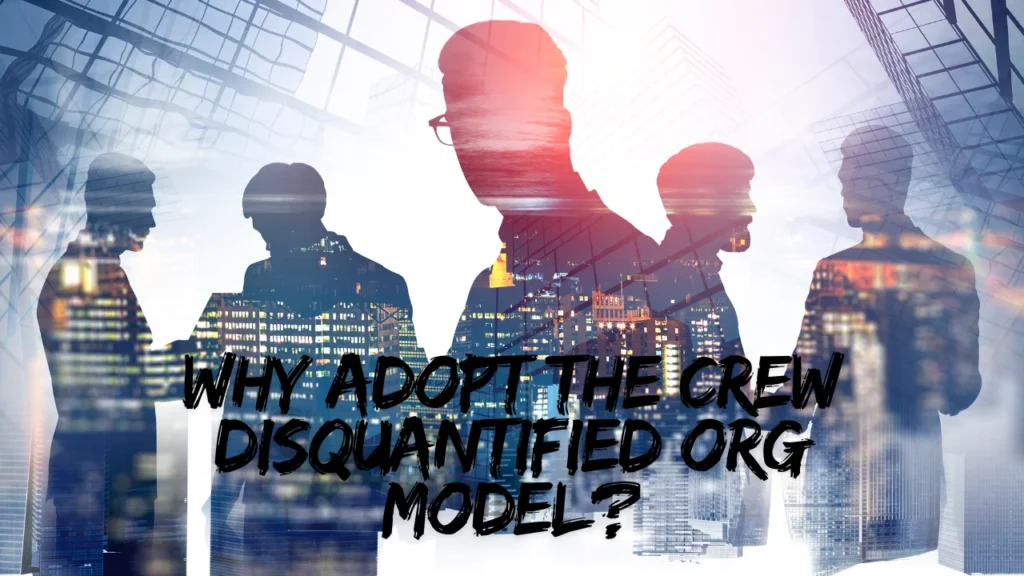Crew Disquantified Org: Innovation Through Human Values
In today’s fast-paced world, organizations constantly seek innovative ways to enhance teamwork and productivity. One such emerging concept is the “crew disquantified org,” a transformative approach that prioritizes human-centric values over traditional metrics. This article delves into the essence of a disquantified org, exploring its principles, benefits, and potential impact on modern workplaces.
Also Read: Everidge Funeral Home Obituaries: A Tribute to Loved One
What is a Crew Disquantified Org?
Crew disquantified org is an organizational model that prioritizes human-centered practices and qualitative values over rigid metrics. Unlike traditional setups that rely heavily on data and numbers, this approach emphasizes creativity, collaboration, and adaptability. The core idea is to create an environment where individuals feel valued, teams thrive on trust, and innovation flourishes.
This model fosters flexibility and encourages teams to adapt to challenges without being confined to strict numerical goals. It values the intangible aspects of teamwork, such as emotional intelligence, mutual respect, and a shared sense of purpose, over measurable outputs.
Principles
It operates on a few foundational principles. These principles are designed to reimagine traditional corporate structures and redefine success.
- Human-Centric Approach: The primary focus is on people rather than processes. Employees are encouraged to share their stories, experiences, and ideas, creating a more empathetic work culture.
- Collaboration Over Competition: Teams in it prioritize collaboration and shared goals over individual performance metrics. Open communication and trust are key elements.
- Flexibility and Adaptability: Unlike rigid hierarchical systems, these organizations embrace fluid structures that can adapt to changing circumstances quickly.
- Creativity and Innovation: By reducing the emphasis on metrics, employees have more freedom to explore innovative solutions and think outside the box.
How It Differs from Traditional Models?
To understand the significance of it, it’s helpful to compare it with conventional organizational models. The table below outlines some key differences:
| Aspect | Traditional Organization | Disquantified Org |
|---|---|---|
| Focus | Metrics and data | People and relationships |
| Structure | Rigid hierarchy | Flexible and fluid |
| Decision-making | Top-down | Collaborative and inclusive |
| Motivation | Performance-based rewards | Shared purpose and values |
| Adaptability | Slow to change | Quick and responsive |
Why Adopt the Crew Disquantified Org Model?

Incorporating the principles of it offers several advantages for modern workplaces. One of the most notable benefits is enhanced employee satisfaction. When people feel heard and valued, they are more motivated to contribute their best efforts. This model fosters a sense of belonging and strengthens team bonds, leading to better overall performance.
Moreover, organizations adopting this approach often see an increase in creativity and innovation. By stepping away from rigid goals and metrics, employees have the freedom to explore new ideas and solutions. This flexibility is especially beneficial in industries where adaptability is key, such as technology and creative sectors.
Another major advantage of it is its ability to foster resilience. In uncertain times, traditional models may struggle to adapt, while a disquantified approach allows teams to pivot and respond effectively to new challenges.
Also Read: Cooke Brothers Funeral Home Obituaries: Honoring Loved Ones
How Technology Supports This Model?
It represents a transformative approach to modern teamwork, emphasizing flexibility, creativity, and collaboration over traditional metrics and hierarchies. As organizations shift toward this human-centric model, technology becomes a vital enabler of its principles. From fostering seamless communication to driving innovation, technology supports it by creating the infrastructure needed for its success.
Facilitating Seamless Communication
Effective communication is the backbone of any successful disquantified org, and technology bridges the gap between teams, whether they are remote or in-person. Tools like Slack, Microsoft Teams, and Zoom allow employees to collaborate in real time, ensuring that everyone stays connected and informed. These platforms encourage open communication, a key principle of the disquantified org, enabling employees to share ideas, provide feedback, and resolve challenges together.
In addition, asynchronous communication tools, such as email and project management software like Trello or Asana, empower teams to work at their own pace while remaining aligned with shared goals. This flexibility ensures that communication flows smoothly, even in dynamic and fast-changing environments.
Encouraging Collaboration Across Borders
The disquantified org model thrives on collaboration, and technology removes geographical barriers that might otherwise hinder teamwork. Cloud-based tools like Google Workspace and Dropbox provide shared spaces for employees to store, access, and edit documents in real time, fostering seamless collaboration among team members, regardless of location.
Moreover, virtual collaboration platforms support cross-functional teams by providing interactive tools for brainstorming and problem-solving. Features like virtual whiteboards, integrated video conferencing, and shared task lists ensure that employees can work together effectively, whether they are in the same room or spread across continents.
Supporting Flexibility and Remote Work
One of the defining features of it is its flexible structure, which allows teams to adapt to new challenges without being restricted by rigid hierarchies or processes. Technology plays a pivotal role in enabling this flexibility, particularly in the context of remote work.
Remote work tools such as Zoom, Google Meet, and Microsoft Teams empower employees to work from anywhere without compromising productivity. Additionally, time-tracking and productivity apps like Toggl and Clockify allow teams to manage their schedules effectively, ensuring that work progresses smoothly without micromanagement
Creativity and Innovation
Creativity and innovation are at the heart of it, and technology provides teams with the tools they need to think outside the box. Design platforms like Canva, Adobe Creative Cloud, and Figma enable teams to create visually stunning projects, while brainstorming tools like Miro and MindMeister facilitate creative ideation.
In addition, artificial intelligence (AI) and machine learning (ML) tools help organizations analyze trends and generate insights that spark innovative solutions. For example, AI-powered tools like ChatGPT can assist with brainstorming content ideas, automating repetitive tasks, and identifying patterns that lead to breakthroughs in problem-solving.
Challenges in Implementing
While the concept of a disquantified org is appealing, it’s not without its challenges. Shifting from a metrics-driven mindset to a qualitative one requires a significant cultural change. Leaders and managers must learn to trust their teams and focus on long-term goals rather than immediate outputs.
Another challenge lies in measuring success. Without traditional metrics, organizations must find new ways to assess progress and ensure accountability. This often involves redefining performance indicators and relying more on feedback and qualitative assessments.
Finally, implementing this model requires strong communication and leadership skills. Leaders must be able to inspire and guide their teams while fostering an inclusive and open environment.
How to Transition?
For organizations looking to embrace the disquantified org model, the transition process involves several key steps:
- Redefine Success: Move away from purely quantitative goals and incorporate qualitative indicators of success, such as employee satisfaction and innovation.
- Empower Teams: Foster a culture of trust and encourage teams to take ownership of their work. Provide the necessary resources and support for them to thrive.
- Invest in Leadership Development: Equip leaders with the skills to guide and inspire their teams in a collaborative environment.
- Encourage Open Communication: Create channels for employees to share their thoughts, ideas, and concerns freely.
- Be Patient: Cultural shifts take time. Be prepared for challenges and stay committed to the process.
What’s Next For Crew Disquantified Org?
As the workplace continues to evolve, it is likely to gain more traction. This approach aligns with the growing emphasis on employee well-being, diversity, and inclusion. Companies that adopt this model can position themselves as forward-thinking and employee-friendly, which is a significant advantage in attracting and retaining talent.
Moreover, the rise of remote work and digital collaboration tools has made it easier than ever to implement the principles of a disquantified org. By leveraging technology, organizations can create flexible structures and facilitate seamless collaboration, even across geographically dispersed teams.
Also Read: Chavez Funeral Home: Supporting Families in Times of Loss
Conclusion
The crew disquantified org represents a paradigm shift in the way organizations operate. By prioritizing people over processes and collaboration over competition, this model offers a path to sustainable success in an ever-changing world. While the transition may require effort and patience, the rewards are well worth it. Organizations that embrace this approach can look forward to enhanced creativity, stronger team dynamics, and a more resilient workforce. As the future of work continues to evolve, the disquantified org is undoubtedly a concept worth exploring.







